Beth Kephart's Blog, page 140
March 7, 2013
Dr. Radway's Sarsaparilla Resolvent: an excerpt, an illustration
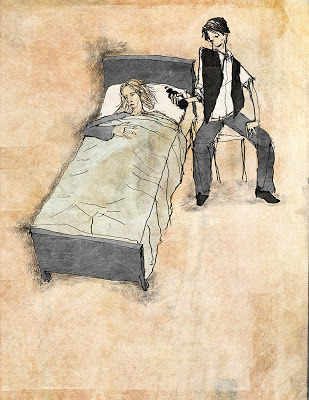
In less than two months, Dr. Radway's Sarsaparilla Resolvent, my 1871 Philadelphia novel (and prequel to Dangerous Neighbors), will be released by New City Community Press/Temple University Press.
This illustrated book (all thanks to William Sulit) is another song to the city I love, and more about it can be found here.
Nearly two years ago, I posted the first words of the book here.
Today I share the whole of a very short chapter two:
<!--
/* Style Definitions */
p.MsoNormal, li.MsoNormal, div.MsoNormal
{mso-style-parent:"";
margin:0in;
margin-bottom:.0001pt;
mso-pagination:widow-orphan;
font-size:12.0pt;
mso-bidi-font-size:10.0pt;
font-family:"Times New Roman";
mso-fareast-font-family:"Times New Roman";
mso-bidi-font-family:"Times New Roman";}
@page Section1
{size:8.5in 11.0in;
margin:1.0in 1.25in 1.0in 1.25in;
mso-header-margin:.5in;
mso-footer-margin:.5in;
mso-paper-source:0;}
div.Section1
{page:Section1;}
</style> <br />
<div class="MsoNormal" style="line-height: 200%;">
<b>Chapter Two</b></div>
<blockquote class="tr_bq">
<div class="MsoNormal" style="line-height: 200%;">
“I keep losing things,” Ma says to
William. The room is swampy, the shadows smug. A bottle of Bitter Wine of Iron
sits lidless on the near table, a sorry spoon beside it. William wipes his
forehead with his sleeve and studies the single mourning dove that will not
leave the sill.</div>
</blockquote>
<blockquote class="tr_bq">
<div class="MsoNormal" style="line-height: 200%; text-indent: .5in;">
“Ma,” he reminds
her. “I’m still right here.”</div>
</blockquote>
<blockquote class="tr_bq">
<div class="MsoNormal" style="line-height: 200%; text-indent: .5in;">
He stands up from
the chair where he’s been sitting. Measures the Bitter Wine onto the spoon
while the dove watches with the flat disk of its eye. William worries briefly for
the dove’s mate, disappeared on the same day that he and Ma lost Francis. The
one dove staying and the other dove gone, and William’s mother dying by inches
of heartache. </div>
</blockquote>
<blockquote class="tr_bq">
<div class="MsoNormal" style="line-height: 200%; text-indent: .5in;">
“Take your
medicine, Ma,” he says. “Doctor made you promise.”</div>
</blockquote>
<blockquote class="tr_bq">
<div class="MsoNormal" style="line-height: 200%; text-indent: .5in;">
Nothing.</div>
</blockquote>
<blockquote class="tr_bq">
<div class="MsoNormal" style="line-height: 200%; text-indent: .5in;">
“Rejuvenation, Ma.
Comfort. Says it right here on the label.”</div>
</blockquote>
<blockquote class="tr_bq">
<div class="MsoNormal" style="line-height: 200%; text-indent: .5in;">
Ma turns. She
closes her eyes and leaves William standing with the thick drip of the stuff on
the spoon—E.F. Kunkel’s Bitter Wine, bought with Francis’s stealings for a hard
one dollar. Lifting the spoon to his own mouth, William sucks it clean, then
pours himself a foul second. The mourning dove cocks its head in a sideways
scold<span style="font-family: "Times New Roman"; font-size: 12.0pt; mso-ansi-language: EN-US; mso-bidi-font-family: "Times New Roman"; mso-bidi-font-size: 10.0pt; mso-fareast-font-family: "Times New Roman"; mso-fareast-language: EN-US;">.</span> </div>
</blockquote>
<blockquote class="tr_bq">
<div class="MsoNormal" style="line-height: 200%; text-indent: .5in;">
<span style="font-family: "Times New Roman"; font-size: 12.0pt; mso-ansi-language: EN-US; mso-bidi-font-family: "Times New Roman"; mso-bidi-font-size: 10.0pt; mso-fareast-font-family: "Times New Roman"; mso-fareast-language: EN-US;">“Mind your own,” William
tells it, but the bird just stares. Everything that’s broken is William Quinn’s
to fix.<br clear="ALL" style="mso-special-character: line-break; page-break-before: always;" />
</span>
</div>
</blockquote>
<div class="feedflare">
<a href="http://feeds.feedburner.com/~ff/BethK... src="http://feeds.feedburner.com/~ff/BethK..." border="0"></img></a> <a href="http://feeds.feedburner.com/~ff/BethK... src="http://feeds.feedburner.com/~ff/BethK..." border="0"></img></a> <a href="http://feeds.feedburner.com/~ff/BethK... src="http://feeds.feedburner.com/~ff/BethK..." border="0"></img></a> <a href="http://feeds.feedburner.com/~ff/BethK... src="http://feeds.feedburner.com/~ff/BethK..." border="0"></img></a>
</div>
Published on March 07, 2013 04:05
March 6, 2013
how does one grade a memoir?
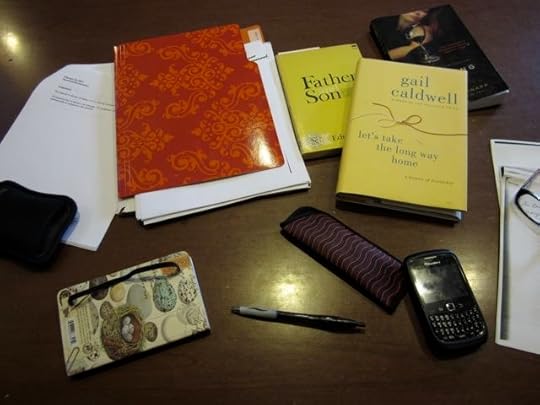
I spend this spring break week reading the memoir work of my Penn students.
It seems unkind, in fact, to assign a grade to work that barrels forth from open hearts.
It seems right to read slowly, to make notes, to think hard.




Published on March 06, 2013 05:58
March 5, 2013
Let's go to Rome with John Guare, and learn writing
I had the pleasure of watching this HBO special last evening—the YoungArts Master Class with John Guare, in Rome. Catch the whole if you can. In the meantime, enjoy the trailer.




Published on March 05, 2013 03:57
March 4, 2013
Announcing Cleaver Magazine, Issue No. 1: Literature, Art, & Some Chickens
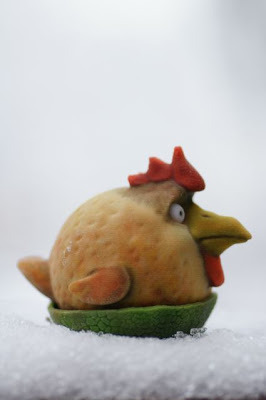
Not long ago you heard me boasting here about my dear friend Karen Rile, uber Penn prof (check out this article in the Pennsylvania Gazette on a recent award Karen deservedly won and what she did with that honor) and (with her daughter Lauren) lit magazine maker.
Today, I'm again privileged to share the news that the first true issue of the magazine has been launched (the last issue was the meta issue, or the half issue, or the .5). It's called Issue No. 1. It features some astonishing work by talents new and established, and it's worth every second you will now spend reading it.
I insist. You will stop now and you will read it.
There are, I warn you, chickens afoot. But I had nothing to do with that. Almost nothing to do with that.




Published on March 04, 2013 15:16
In the Garden of Stone/Susan Tekulve
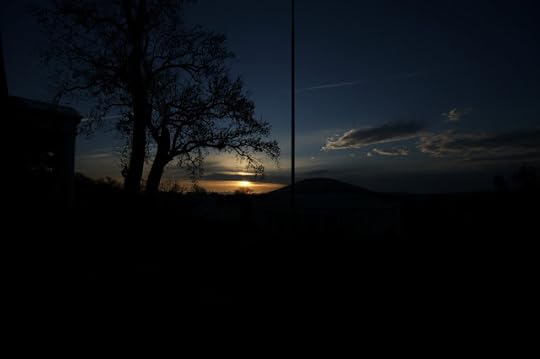
You know how it is when you steal that time to read the book you desperately want to read? I have been stealing that time.
Among the many wonderful people I met at the Bread Loaf Writer's Conference (a conference I attended so that I could spend more time with the great Jayne Anne Phillips)—Brooks Hansen, Anne Lamott, Jane Satterfield, Leslie Pietrzyk, Jay Kirk, Olena Kalytiak Davis, my first editor, Alane Salierno Mason (W.W. Norton), my second editor in chief, Janet Silver, Grace Paley, even—there was a young scholarship winner named Susan Tekulve, who hailed from the south and told intriguing tales. Through the years Susan and I remained in touch as she published short stories and built a reputation as a fine teacher at Converse College in Spartanburg, SC. She traveled to and taught in Italy. She spent time among the Appalachian hills, where my great grandfather had left a mark. She brokered fascinating details. She was always humble and she, like me, loved chocolate, cats, and gardens.
Not long ago, Susan won the South Carolina First Novel Prize for In the Garden of Stone, which will be released in a beautifully designed package by Hub City Press in late April. Kirkus gave it a huge star. Library Journal named it as a Spring Break. None other than Robert Olmstead, Thomas E. Kennedy, and Josephine Humphreys have sung its praises, and I asked for an early copy.
This is the book I've been desperate to read, and my joy for Susan, my enthusiasm, my deep respect, I'll use the word "awe"—it overflows. I'm 100 pages in and now must leave it for a spell to do some corporate work. I'll write a full response in a few days. But for now let me say that this generational book about the south and southern Italy (yes, they combine to perfection here) is so brilliantly built and quietly affecting that I could choose any single paragraph and it would impress you.
Here's just one. It's 1924, the first evening of a southern honeymoon.
Around the mountain pool, the butterflies flattened themselves against long, polished stones, drinking the water held in their dimpled surfaces. Emma took off her shoes and walked across the slippery rocks. Water sprayed her face and arms as she dodged the drinking butterflies and stood at the pool's edge, watching the giant trout swim around the pool. Dark blue and mottled, they skulled just below the surface, gulping up butterflies and water, their stomachs filling like empty buckets. She saw now why her husband had released them. She, too, was satisfied just to know that they were there.




Published on March 04, 2013 07:15
March 3, 2013
The Lover/Marguerite Duras: Reflections

"I read The Lover to be Marguerite Duras writing about herself," Maxine Hong Kingston posits in her introduction to this classic book labeled "Fiction." Vivian Gornick, too, writes of the book as if it is a memoir, of course a memoir, and everything we know about Duras suggests that memoir was the author's madness and method.
This is, after all, the story of a young, nearly impoverished French girl, fifteen, who conducts an illicit affair with a much older Chinese lover—determinedly, provocatively, in full awareness of the costs, just as Duras did. It involves an unstable mother and two brothers, one of whom Duras refers to as the murderer, the other as the martyred; here biography again asserts itself. The setting is prewar Indochina, where Duras was born and lived until she went to France to study. And a returning, angry, consoling theme is the unnamed narrator's wish to be a writer.
Labeled fiction. But.
I will take this as memoir, too. I will take it as memoir and I will add it to my list of books that teach those who seek to wrestle the form (in past tense, in present tense, in third person, in first). The Lover is a fierce, slender book—forthright and obscuring, declarative and confused, angry and proud. It feels like a book written in a single rush, a mirror of the remembering mind at work. This could be true, this may be true, this was true, and that was me, but that was me then. We haul our past lives forward in this life. We look around and there are multiples.
And once we were young. And once we thought we would not have to forgive or not have to love any one person more than we love ourselves. Among the many things The Lover is about is the knowledge we gain too late in life.
Which is why this book should be read by the young.
An excerpt from a story that folds in upon itself, then unfolds, that yields genre-less wisdoms like these:
People ought to be told of such things. Ought to be taught that immortality is mortal, that it can die, it's happened before and it happens still. It doesn't ever announce itself as such—it's duplicity itself.... It's while being lived that life is immortal, while it's still alive.
For more thoughts on memoirs, memoir making, and prompt exercises, please visit my dedicated Handling the Truth page.




Published on March 03, 2013 09:41
March 2, 2013
"Grease" is so totally the word at Radnor High: Photos of Fine Performances
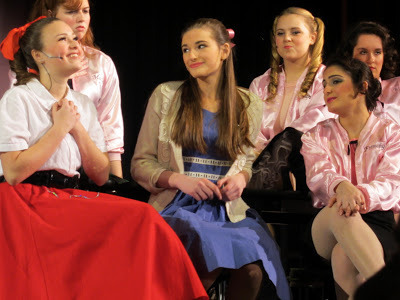
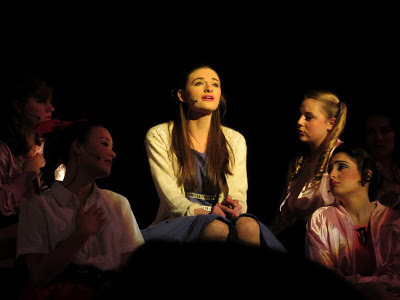
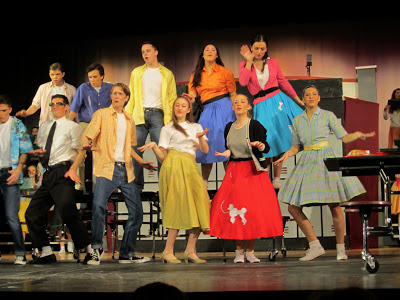

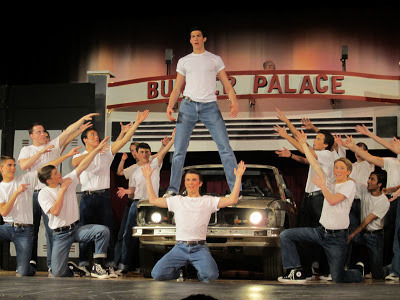

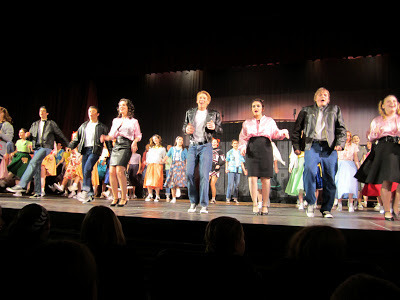
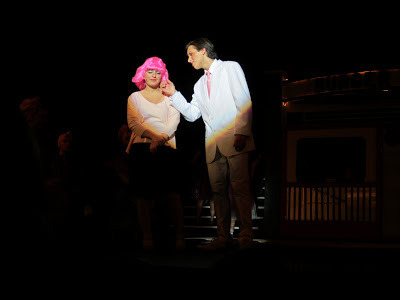
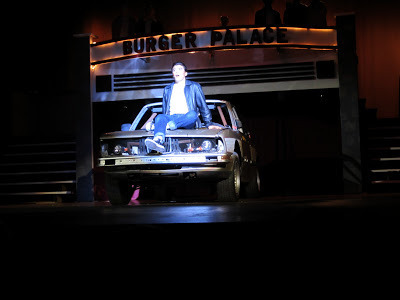
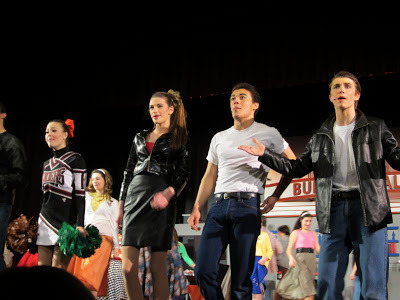
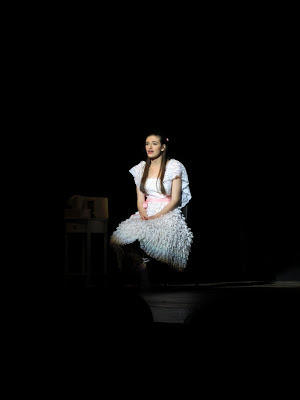
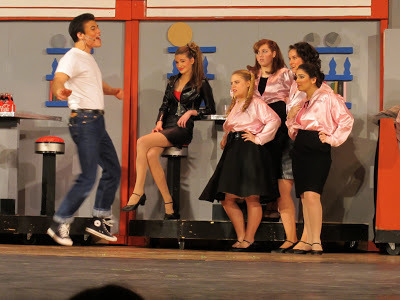
I have just returned from the matinee showing of my very own high school's production of Grease, which stars an incredible cast of singers, dancers, attitude shifters, and actors, among them my young friends Alison Mosier-Mills and Cat Mosier-Mills. They belong to that lovely couple Elizabeth Mosier and Chris Mills—okay, so "belong" is the wrong word. But they look just like them, and they have talent coming out of their ears. My father, who was my date and always is at these productions, had a smile on his face for two long hours, and so did I, for many reasons.
I share some of the photos I took—without a flash, I promise. Please also note the uber talented Blake Thomson, a member of my own St. John's Presbyterian Church. He's the blond greaser who shows up in many images; you know it's him because he's kneeling before the old non-souped-up Beamer.
Congratulations to the entire cast!




Published on March 02, 2013 14:19
March 1, 2013
Maggie Ercolani, a bold, brave, wise student, debuts in the Pennsylvania Gazette

Okay, so call this a Beth loves her students blog-athon day, but I am not going to let the moon get any higher in tonight's sky without celebrating Maggie Ercolani, a student from two years ago, who has her first published piece in the current issue of the Pennsylvania Gazette. She joins my students Moira Moody, Joe Polin, and Nabil Mehta on these pages, and her story is a triumph—a telling triumph and a living triumph.
Let me explain.
Toward the end of this past summer I received an email from Maggie who I knew, from an earlier exchange, had been looking forward to a summer internship at Macy's with Maggie-style enthusiasm. I saw her name in my in-box, opened her note, then recoiled. It wasn't the story I'd expected. Indeed, Maggie was writing to tell me that she had suffered a stroke in the first hour of the first day of that internship. That she had spent the summer in hospitals and rehab. That she had a new understanding of the father about whom she had written in my class—a father who had experienced a traumatic brain injury when he tumbled from a bike. Maggie wanted to write about what had happened so that she might understand. Would I help her? Of course I would. But oh, Maggie, I said. Oh. Maggie.
But the reason Maggie's piece is in the Gazette is because Trey Popp, an editor there, took Maggie's story on and worked with her to develop it more fully. They went back and forth, Trey and Maggie, until the piece is what it is today. I am so grateful to Trey, and I am so proud of Maggie—for her perseverance, for her attitude, for the textures in her life.
Please click on this link to read Maggie's story for yourself.




Published on March 01, 2013 15:57
Hairography: coming to a mailbox near you

I'm not actually done talking about those fabulous YoungArts writers yet. Indeed, for the past several weeks, I've been eagerly anticipating the arrival of Hairography, the book my husband and I created to celebrate the work of these super novas. Bill took the gorgeous portraits; he designed the book. I encouraged and prodded. The National YoungArts Foundation made the publication possible.
Today Hairography arrives in the students' mailboxes. I am immeasurably happy about that. This, above, is Miss Shelley Hucks, whose beautiful words close the book. And here are some of my words, from the preface:
<!--
/* Font Definitions */
@font-face
{font-family:Cambria;
panose-1:2 4 5 3 5 4 6 3 2 4;
mso-font-charset:0;
mso-generic-font-family:auto;
mso-font-pitch:variable;
mso-font-signature:3 0 0 0 1 0;}
/* Style Definitions */
p.MsoNormal, li.MsoNormal, div.MsoNormal
{mso-style-parent:"";
margin:0in;
margin-bottom:.0001pt;
mso-pagination:widow-orphan;
font-size:12.0pt;
font-family:"Times New Roman";
mso-ascii-font-family:Cambria;
mso-ascii-theme-font:minor-latin;
mso-fareast-font-family:Cambria;
mso-fareast-theme-font:minor-latin;
mso-hansi-font-family:Cambria;
mso-hansi-theme-font:minor-latin;
mso-bidi-font-family:"Times New Roman";
mso-bidi-theme-font:minor-bidi;}
@page Section1
{size:8.5in 11.0in;
margin:1.0in 1.25in 1.0in 1.25in;
mso-header-margin:.5in;
mso-footer-margin:.5in;
mso-paper-source:0;}
div.Section1
{page:Section1;}
</style>
-->
<br />
<blockquote class="tr_bq">
<div class="MsoNormal">
The thing about being a “master” teacher in the National
YoungArts Foundation program is that there are no rules.<span style="mso-spacerun: yes;"> </span>You are invited to come to Miami in
early January, to stand among the finalists of a rigorous national contest, and
to divulge (perhaps) who you’ve been, where you’ve traveled, what you’ve
learned, what failure taught you, what the dream looks like on the opposite
side of the moon.<span style="mso-spacerun: yes;"> </span>As a writer who
has experimented with all genres and published in most, as a person who takes greatest
pleasure from watching others soar, as a woman more inclined to listen than to
speak, I chose to invite the two dozen bright lights to see themselves new and
to report back on their adventures.<span style="mso-spacerun: yes;">
</span></div>
<div class="MsoNormal">
<br /></div>
<div class="MsoNormal">
<i style="mso-bidi-font-style: normal;">Hairography</i> I
called it.<span style="mso-spacerun: yes;"> </span>What does the stuff on
the top of your head have to say?<span style="mso-spacerun: yes;">
</span>How will it say it?<span style="mso-spacerun: yes;"> </span>What is
the mood, the tone, the diction, the lexiconical reach?<span style="mso-spacerun: yes;"> </span>How does the hair manage to think when
it is perpetually leaving itself behind?<span style="mso-spacerun: yes;">
</span>Is it at peace?<span style="mso-spacerun: yes;"> </span>Can it know
peace?<span style="mso-spacerun: yes;"> </span>Find the pronoun, name the
gender, consider plurals and singulars, tense and tone, or don’t.<span style="mso-spacerun: yes;"> </span>Write the autobiography of your hair.</div>
</blockquote>
<div class="feedflare">
<a href="http://feeds.feedburner.com/~ff/BethK... src="http://feeds.feedburner.com/~ff/BethK..." border="0"></img></a> <a href="http://feeds.feedburner.com/~ff/BethK... src="http://feeds.feedburner.com/~ff/BethK..." border="0"></img></a> <a href="http://feeds.feedburner.com/~ff/BethK... src="http://feeds.feedburner.com/~ff/BethK..." border="0"></img></a> <a href="http://feeds.feedburner.com/~ff/BethK... src="http://feeds.feedburner.com/~ff/BethK..." border="0"></img></a>
</div>
Published on March 01, 2013 10:06
February 28, 2013
Small Damages and Books and Movies. Carrie, thank you.
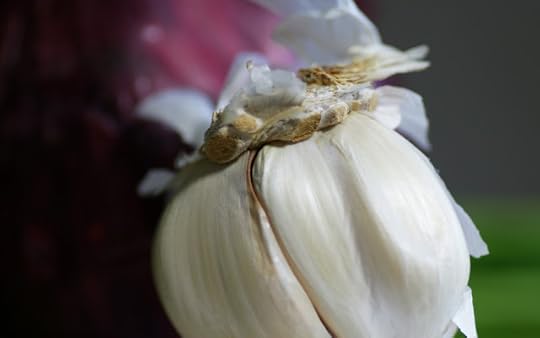
A moment to say how much it has meant to me to continue to hear from readers of Small Damages. I am, in so many ways, an under-the-radar writer. To be found, to be read, to be kindly (generously) remembered on Facebook—it is remarkable. To find Small Damages on blogs as powerful and respected as Carrie's own Books and Movies—where are the words?
With greatest thanks to all of you. With great thanks to Carrie today, for this review.




Published on February 28, 2013 05:22



